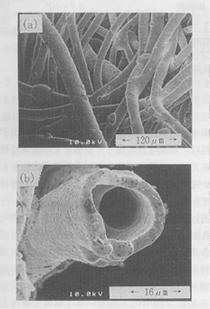Nickel plating is used as various types of alloy plating and also as matrix metals of composite plating films because it offers excellent corrosion resistance, mechanical properties, and thermal resistance as well as electrical conductivity, magnetism, catalyst performance, and hydrogen permeability, etc. It plays an active part across a wide range of areas, such as automobiles, home electrical appliances, electrical and electronic devices, and industrial machines.
| Type of plating | Features | Characteristic value |
|---|---|---|
| Watts (nickel sulfate) bath | - Hardness Hv100 – 250, tensile strength 35 – 56kg/mm2, elongation 10 – 35% - Sulfur (S) content in plating film Dull Ni (0.001 – 0.002%) Semigloss Ni (0.005%) Bright Ni (0.05%) - Corrosion resistance Dull Ni > Semigloss Ni > Bright Ni |
- Residual stress 12kg/mm2 |
| Sulfamate bath (chloride-containing) |
- Hardness Hv150 – 520, tensile strength 42 – 91kg/mm2, elongation 5 – 28% | - Residual stress 0.4 – 0.6kg/mm2 |
| Wood’s (nickel chloride) bath | Primary plating for unplatable materials: nickel strike (improvement of adhesion properties) | |
| Nickel-based alloy electroplating | Ni-10%Fe alloy plating: Decorative, corrosion resistance
Ni-20%Fe alloy plating: Soft magnetism (high magnetic permeability, low coercivity) Ni-Co alloy plating: Hard magnetism (memory property) Ni-50 – 60%Fe: Low thermal expansion coefficient (invar alloy) Ni-S alloy plating (caustic soda manufacturing electrode catalyst for brine electrolysis) |
|

Ni plating for fibers and Ni-plated metal pipe
Types of plating
Materials & uses